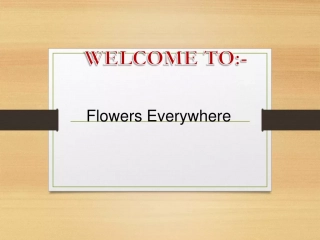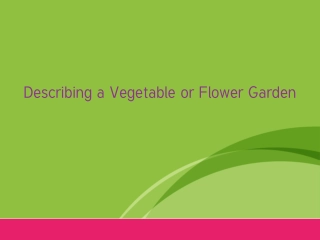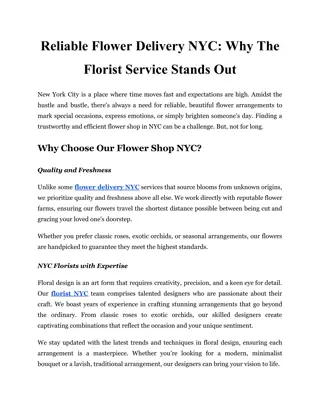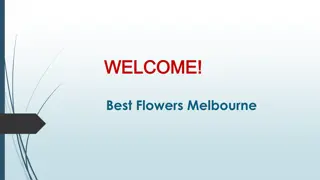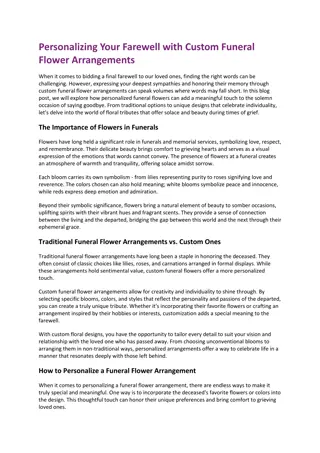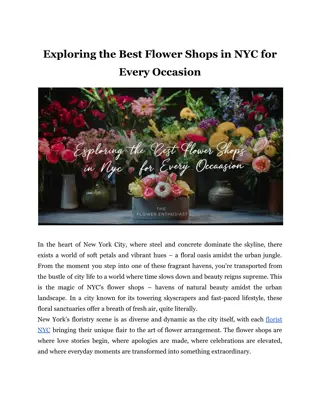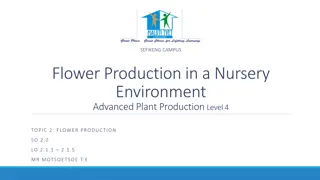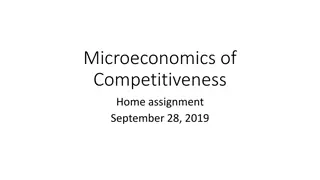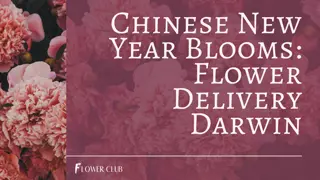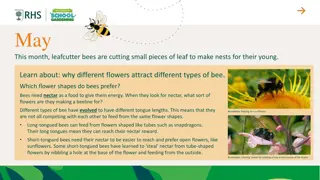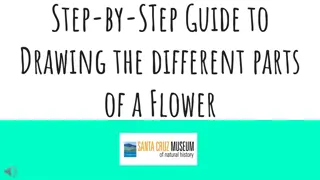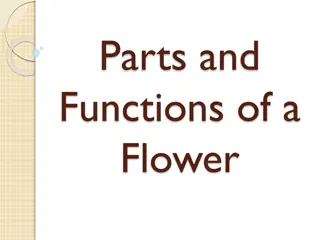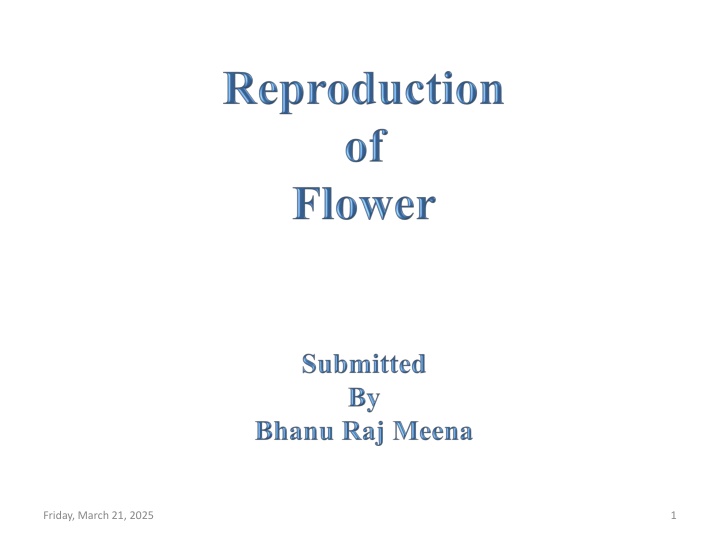
Evolution and Anatomy of Flowers
Explore the evolution and anatomy of flowers, including the problem of homology and morphology evolution. Learn about floral organs, receptacle, perianth, stamens, carpels, and more. Discover the fascinating world of angiosperms on Friday, March 21, 2025.
Download Presentation

Please find below an Image/Link to download the presentation.
The content on the website is provided AS IS for your information and personal use only. It may not be sold, licensed, or shared on other websites without obtaining consent from the author. If you encounter any issues during the download, it is possible that the publisher has removed the file from their server.
You are allowed to download the files provided on this website for personal or commercial use, subject to the condition that they are used lawfully. All files are the property of their respective owners.
The content on the website is provided AS IS for your information and personal use only. It may not be sold, licensed, or shared on other websites without obtaining consent from the author.
E N D
Presentation Transcript
Flower its evolution; foliar stamens; open carples; primitive living angiosperms; floral anatomy; inferior ovary; placentation and its evolution. Friday, March 21, 2025 2
The problem of homology and morphology evolution of the flower has occupied research workers for a long time. Investigators such as Wolff and Goethe in the eighteenth century, de Candolle at the beginning of the nineteenth century, and many others since then were interested in this problem (Arber 1937,1950). Opinions were expressed that floral organs are derived directly from foliage leaves. However, in the light of the view generally accepted today that the laves and stem constitute a single unit which is termed the shoot, we can visualize the development of the flower as being parallel to that of a vegetative branched not as being derived from it. Friday, March 21, 2025 3
The flower consists of an axis on which the rest of the floral organs are borne. That part of the axis that represents the internodes terminated by the flower is termed the pedicel. The distal end of the pedicel is swollen to various extents and this portion is termed the floral receptacle or thalamus. The floral organs are attached to the receptacle. A typical flower has four type of organs: (1). The outermost organs of the flower are the sepals; which together constitute the calyx which is usually green and is found lowest on the receptacle. (2) On the inside of the sepals is the Corolla consisting of the petals which are generally colored. These two types of organs together form the perianth; However, sometimes one of them may be lacking. When all the organs of the perianth are similar they are termed tepals. Friday, March 21, 2025 4
Within the perianth two kinds of reproductive organs are found: externally the stamens which together from the androecium, and internally the carpels which form the gynoecium. The arrangement of the floral organs on the receptacle may be spiral or whorled,& both types of arrangement may occur in the same flower. In most flowers in which the arrangement is whorled the organs of each whorl alternate with those of the neighboring whorl. The floral organs may be free or fused. Fusion of organs of the same types is termed Cohesion & that of different types of organs adnation. The term pistil is no longer used as it is not sufficiently well defined. This term was used both for each of the free carpels of a flower as well as for the unit which is formed by the fusion of a few carpels ; Friday, March 21, 2025 5
The stamen consists of a filament which distally bears the anther. Two lobes can be distinguished in the anther and they are attached to a continuation of the filament which is termed the connective. Each of these lobes contains two pollen sacs in which pollen grains are found. The pollen grains in their early stage of development are the microspores of the angiosperms. The free carpel or fused gynoecium usually consists of the three parts:- The Ovary, a hollow body which contains one or more ovules: The Style which result from the elongation of the ovary wall; and The Stigma which is that part at the top of the style which has a surface structure enabling pollination. Friday, March 21, 2025 6
The ovules are attached to a special thickened region of the carpel wall which is termed the placenta. When the carpels are found on the highest level of the floral axis the ovary is termed superior or the flower hypogynous. In certain plants the perianth & stamens are located on the edge of a laterally expanded disc which raises them above the ovary; such a flower is termed perigynous, and its ovary is said to be intermediate or pseudo-inferior. The concave disc may completely enclose the ovary so that it then found below the other floral organs; in such a flower the ovary is to be inferior and the flower epigynous. Friday, March 21, 2025 7
Capparis spinosa: Young caper flower Capparis Passiflora Friday, March 21, 2025 10
Stigma Style Ovary Anther Androgynophore, Corona Gynondrophore Petal Friday, March 21, 2025 11

